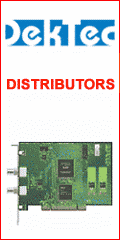
- site version is

- page last edited on 20020623
- all links last checked on 20010222
- have this site translated
- other mirror sites

|
|
|
| Click on the first letter of the electronic term you're looking for: | ||||||||||||||||||||||||||
|---|---|---|---|---|---|---|---|---|---|---|---|---|---|---|---|---|---|---|---|---|---|---|---|---|---|---|
| 0..9 | A | B | C | D | E | F | G | H | I | J | K | L | M | N | O | P | Q | R | S | T | U | V | W | X | Y | Z |
| www.faqs.org/ | Internet FAQ Archives, good! |
| ftp.psyber.com/tcj/faqs/ | Lot of electro FAQ's |
| sunsite.informatik.rwth-aachen.de/faqs/ | Search engine for FAQ's |
| www.cs.ruu.nl/cgi-bin/faqwais/ | University of Utrecht |
| Where | Manufacturer |
|---|---|
| www.kaynar.com/ | Kaynar |
| users.etech.fh-hamburg.de/users/wendt_a/texte/faxclas2.htm | Discription of fax class 2 operation |
| Where | Manufacturer |
|---|---|
| www.sciam.com/2001/0101issue/0101stix.html | Scientific American article about fiber optics |
| www.lightreading.com/ | More about optical networking |
| www.corningfiber.com/ | Corning |
| www.fibrechannel.com/ | Fibre Channel Association (a trade association) |
| www.fiberopticsonline.com/ | FiberOptics Online (by VerticalNet) |
| www.t11.org/ | T11 Technical Committee (Fibre Channel, HIPPI, IPI, SBCON) |
| softseek.com/Programming/Tutors/Review_13088_index.html | File Formats Encyclopedia is a reference guide that describes technical details for over 300 file types. |
| Where | Manufacturer |
|---|---|
| www.aerovox.com/ | Aerovox |
| www.avxcorp.com/ | AVX Corp |
| www.coilcraft.com/ | Coilcraft |
| www.cor.com/home2.html | Corcom |
| www.okaya.com/ | Okaya Electronics |
| www.potterpower.com/ | Potter Production |
| www.schaffner.com/ | Schaffner EMC |
| www.spectrumcontrol.com/ | Spectrum Controls |
| www.tusonix.com/ | Tusonix |
| local |
| www.esacademy.com/faq/docs/flash/ | Article: Using Flash Memory in Embedded Applications |
| www.badflash.com/ | Flash EPROM* recovery and replacement business |
| users.supernet.com/sokos/fd.txt | Mark Sokos |
| theref.aquascape.com/ - (gone?) | TheRef (Floppy/Hard disk drives) |
| www.xs4all.nl/~johanw/#formularium | Physics formulae by Johan Wevers |
| www.xs4all.nl/~johanw/#math | Mathematical formulae by Johan Wevers |
| www.forth.org/faq.html | FAQ in HTML |
| ftp.psyber.com/tcj/faqs/forth01.faq | FAQ in text by M. Anton Ertl |
| ftp.psyber.com/tcj/faqs/forth02.faq | |
| ftp.psyber.com/tcj/faqs/forth03.faq | |
| ftp.psyber.com/tcj/faqs/forth04.faq | |
| ftp.psyber.com/tcj/faqs/forth05.faq | |
| ftp.psyber.com/tcj/faqs/forth06.faq | |
| www.forth.org/ | Forth Interest Group (FIG) |
| www.forth.com/ | Forth, Inc. |
| www.clienux.com/ | A Forth based distribution of Linux |
| www.angelusresearch.com/ | "Whiskers" is a robot that is run by Forth |
| www.optimagic.com/lowcost.html#VeryLow | free Atmel AT40k FPGA development software |
| www.us-epanorama.net/fpga.html | At ePanorama |
| www.ultratechnology.com/store.htm | Video tapes of a class on FPGA logic design |
| www.spacetimepro.com/dyop.htm | Design Your Own Processor (in FPGA)! |
| www.thesis.cjb.net/ | Another project |
| Where | Manufacturer |
|---|---|
| www.belfuse.com/ | Belfuse |
| www.bussmann.com/ | Bussmann |
| www.littlefuse.com/ | Littlefuse Elect. Prod |
| www.raychem.com/ | Raychem |
| Click on the first letter of the electronic term you're looking for: | ||||||||||||||||||||||||||
|---|---|---|---|---|---|---|---|---|---|---|---|---|---|---|---|---|---|---|---|---|---|---|---|---|---|---|
| 0..9 | A | B | C | D | E | F | G | H | I | J | K | L | M | N | O | P | Q | R | S | T | U | V | W | X | Y | Z |

| Goto: | Main | Mirror | About | Author |
| Register: | Yourself | Company | ||
| Feedback: | Correction | Addition | Question | |
| Order: | Chips (Deutsch) | Chips (English) | Chips (Nederlands) |